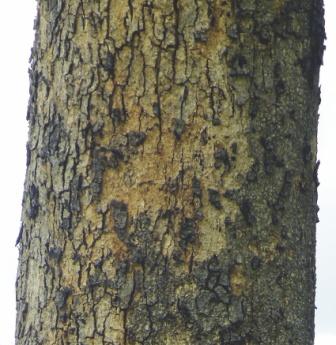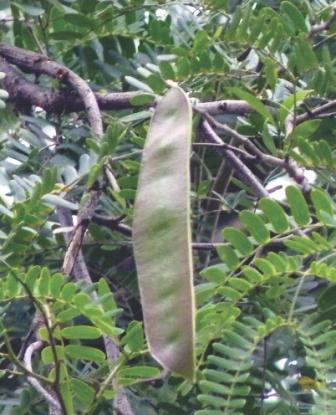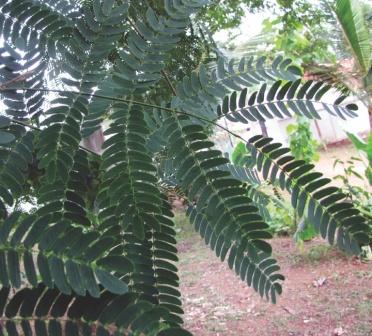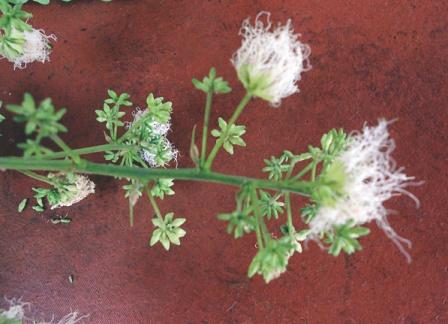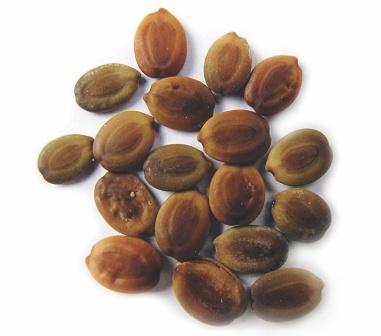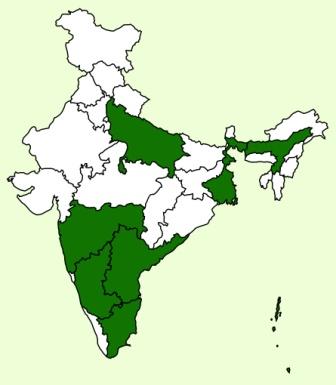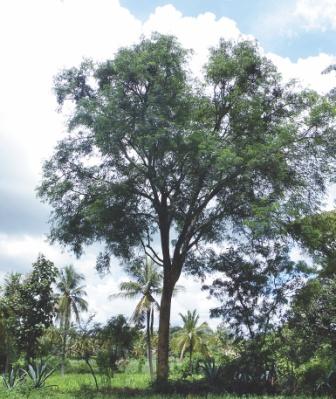Natural Regeneration :
Natural Regeneration:
- Regeneration is satisfactory with good soil conditions.
Artificial Regeneration:
- Siris can be raised easily by direct sowing and Nursery raised seedlings.
Seed Collection and Storage:
- Pods are collected from the tree April - May
- The pods are collected, dried in sun and seeds are extracted.
- The cleaned seeds are stored in gunny bags in a dry place for long period without losing the germinative capacity.
- Seed weight is 15000/kg.
- Germinative capacity is 47%
- Expected number of plant per kg. of seed is 7285.
Seed Treatment:
- The seeds are soaked in cold water for 24 hours before sowing.
Nursery Technique:
- The seeds are sown in mother bed during April and watered regularly till the germination takes place.
- Germination starts from within 10 days from sowing.
- The seedlings are transplanted to polybags when it attains 15-30 cm height.
- Weeding accelerates the growth of the plants.
- The seeds can also be directly sown in polybags of size 13 x 25 cm in April – May to obtain the plantable size seedlings by July.
Plantation technique :
Direct sowing :
- The species can be raised successfully by direct sowing in lines 1.5 m apart in July and September.
- This method can be adopted in hot dry region with less rainfall.
Nursery raised seedlings:
- Planting out is carried out during July in 30 cm3 pits,
- Under dry conditions, pit size of 60 cm3 with a spacing of 3x3 m to 5m x 5m
- Planting should be carried out after the commencement of monsoon
Care & Disease Control :
- Two weedings are carried out in the first and one in second year
- Soil and water conservation measures to be adopted.
Irrigation :
For proper growth and survival, it is necessary to give one or two waterings after planting.
This is specifically required in arid regions. Irrigation after planting is not a prerequisite in areas having sufficient soil moisture and precipitation.
Higher survival rate and better rate of growth is reported when soil and water conservation measures are also adopted.
Recommended Harvest :
Yield :
- Approximately 160 to 170 tons/ha*
*Subject to varry according to site factors.
Agro Forestory :
- The tree utilizes the subsoil moisture and nutrients not available to plants and protects them from hail and rainstorms.
Shade or shelter:
- A. odoratissima has been extensively planted as a shade tree in tea and coffee plantations.
Major uses :
Wood:
- It is a valuable constructional timber and cabinet wood.
- It is used for beams, rafters, planking: carts, oil mills, ploughs, cooperages and decorative work and paneling
- Leaves are good fodder for cattle.
- It makes a good avenue tree with sweet scented flowers.
Market details :
- Approximately Rs.3700 to Rs.4000/ton*
*Subject to change according to market demands


